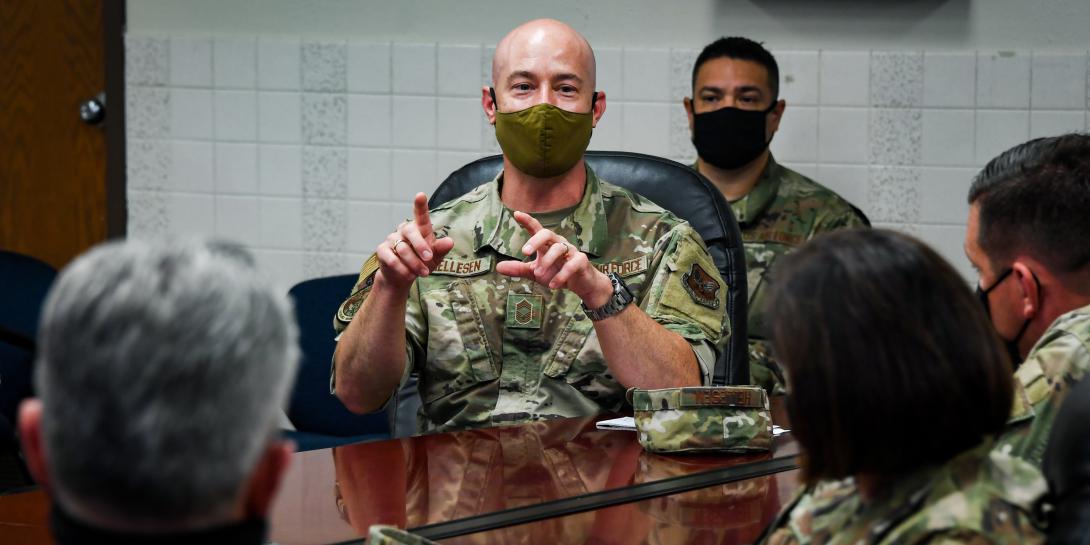Air Force to Reclassify Cyberspace Support Career Fields
As the Air Force strives to become a digital force and embraces Chief Gen. C. Q. Brown’s vision of accelerating change, the service is streamlining its cyber and communications career fields. Headquarters Air Force leaders, National Guard and Reserve leaders and major command functional managers of the cyberspace support career field met at Sheppard Air Force Base, Texas, last week to discuss how to develop the adaptable, agile communications and cyber career fields needed to support future Air Force requirements, reported John Ingle from the 82nd Training Wing Public Affairs. At the meeting, the leaders made a key decision to reclassify certain cyber career designations, driving toward an “all-in-one cyberspace airman concept,” Ingle said.
Over the next year or so, the service will move from having multiple Air Force Specialty Codes (AFSC) for cyberspace support to a single AFSC, with so-called “shred outs,” or specialties within that one cyberspace career field. As a result, each cyberspace airman would have a broader scope of and greater capabilities in cyber, according to the leaders.
Chief Master Sgt. Victor Cordero Jr., USAF, manager of the Air Force’s cyberspace support career field, said he is intent upon developing agile airmen who can thrive in a robust cyberspace career field with modernized training and curriculum.
“It’s to create an operational culture, offer cyber fundamentals and optimize with efficiencies the training content and delivery,” Chief Master Sgt. Cordero noted. “Having the right skills, knowledge, training and experience and assess through a capstone event will help the mission when new cyber professionals arrive to execute the mission.”
Presently 11 AFSCs make up the 3D, or cyberspace support career field. By November 2022, the service will merge those 11 AFSCs into one career field called the 1D7, Ingle reported.
“It prepares us because it gives us that training to not look at it from delivering services and capability, but in order for us to be successful in applying the security disciplines for our Air Force,” Chief Master Sgt. Cordero said.
The Air Force Special Operations Command (AFSOC) has already been employing the all-in-one cyberspace airman concept, according to Chief Master Sgt. Robert Ross, USAF, functional manager, AFSOC. Given the demands of their missions, AFSOC has developed in-house training to create an expeditionary-focused, multidisciplined airmen to provide a broader scope and capability in cyber as a much smaller unit.
“As AFSOC, we’ve done a really good job of pushing our trained personnel to the larger Air Force, so they’ve gotten a taste of what that is like, and they know the capability that is coming forward and the discipline that they’re going to get and the ability to get to ‘yes’ and to provide at the speed of need—that’s what it’s about and they like that,” Chief Master Sgt. Ross indicated. “My job is to really foster that type of attitude and that type of pipeline of production that will make the entire Air Force better.”
The all-in-one approach would drive schoolhouse training in cyber to include more advanced concepts and train warfighters much faster, the leader said.
“That’s exactly what we’re after,” Ross said. “We’re operationalizing our career field to get after those persistent threats. We call it ‘mission assurance.’ We’re building mission defense teams. We’re transitioning from providing a service like email and infrastructure and those types of things, to operationalizing to provide mission assurance to weapons platforms to survey, secure, protect, defend and maneuver if needed so the operational mission can achieve its desired effect unimpeded.”





Comments